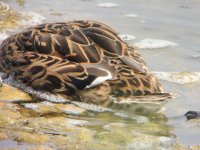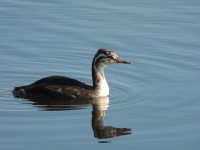Felshampo
Active member
I have started digiscoping after getting some sound advice from members. I am using a leica 62, adapter 2 with a nikon p310. All good so far. Is there a step by step beginners guide with helpful hints now that I have the gear so that I can make the best of it?
After spending several hours now trying to take photos I still find many aspects very difficult and wonder if this is just the way it is or maybe there are a few 'tricks of the trade' that can help.
1. Positioning the camera in the adapter to get the sharpest and largest image. It seems if you alter the distance of the camera from the lens at the beginning this alters when you use the lens, so do you zoom out first?
2. As many birds are on or around water getting the correct exposure with the camera is difficult.
3. Do i focus the telescope first then the camera or both? Do I use manual focus or automatic focus? With my long sight this is even more of a problem.
4.How do you get the birds to keep still?
Just a few of the problems.....................
Here are a couple of today's photos.


Also a video.
http://youtu.be/X2N4Ax4c5io
After spending several hours now trying to take photos I still find many aspects very difficult and wonder if this is just the way it is or maybe there are a few 'tricks of the trade' that can help.
1. Positioning the camera in the adapter to get the sharpest and largest image. It seems if you alter the distance of the camera from the lens at the beginning this alters when you use the lens, so do you zoom out first?
2. As many birds are on or around water getting the correct exposure with the camera is difficult.
3. Do i focus the telescope first then the camera or both? Do I use manual focus or automatic focus? With my long sight this is even more of a problem.
4.How do you get the birds to keep still?
Just a few of the problems.....................
Here are a couple of today's photos.


Also a video.
http://youtu.be/X2N4Ax4c5io



